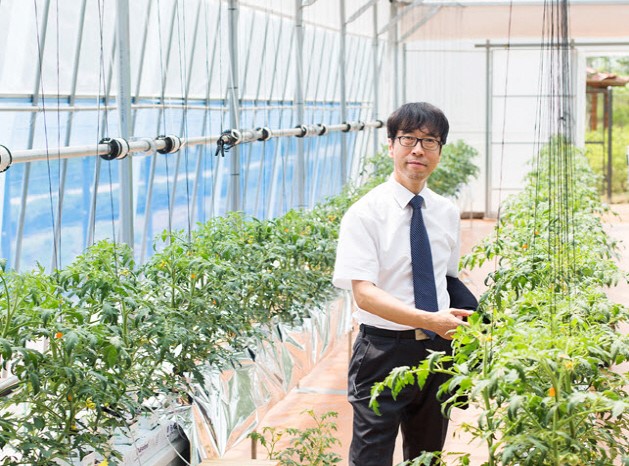Department News
Professor Jeong-hoon Lee expands the scope of plants "inside reading"
Author
이수빈
Date
2023-03-31
Views
311

Korean semiconductor chips vines in Napa Valley? Expanding the scope of “inside reading” of plants
“Contrary to the idea that an abundance of water is good, plants produce more delicious fruits when there is a deficiency of it. Creating stress has been at the heart of farming for thousands of years. This little semiconductor chip makes that possible.”
These are the words of Professor Jung-hoon Lee of the Department of Mechanical Engineering at Seoul National University, whom we met the 1st at a farm and office in Seocho-gu, Seoul. He asked not to take pictures due to concerns about technology leakage, but proudly showed off a semiconductor chip the size of millet rice (0.5mm wide, 0.6mm long, 0.1mm thick) that he improved through research since 2015. In the office, there were stacks of semiconductor modules scheduled to head to the United States the 3rd.
This semiconductor chip is used to determine the flow of moisture by inserting it into the stem or branch of a plant. It helps to supplyly the necessary amount of water for plant growth by analyzing the nutrient absorption situation such as photosynthesis of plants. Radio data transmission occurs every 15 minutes. The price ofe substrate with a semiconductor chip it is about 1,000 won, ande module consists of four semiconductor substrates. The cost of the entire module, including the wireless transmitter and battery, is about 150,000 won.
Professor Lee said, “In terms of people, blood pressure and pulse are constantly being measured.” “By examining how the flow of water changes under certain circumstances, we can determine notly the amount of water required, but also the presence of pests and diseases, and the effect of fertilizers,” he said. In 2017, he founded Telofarm, a smart farm solution venture company based the technology development results of Seoul National University and Rural Development Administration research projects. Even now, 10% of the business is owned by Seoul National University.
Professor Lee first conducted a study using cherry tomatoes. The sugar content of cherry tomatoes grown using this technology was 14 brix, twice the average of 7 to 8 brix. It is similar to tangerines, peaches, and melons, which are representative fruits with high sugar content. In addition to sugar content, overall marketability, such as nutritional content and size, was improved, and in December of last year, it was sold out in a test delivery to a famous department store in Korea at four times the price of regular cherry tomatoes.
Since last year, three or four wineries in wine regions such as Napa Valley and Sonoma Valley in the U.S. have tested the technology. One acre (approximately 4046㎡‧1224 pyeong) of land is divided into 6 zones according to the slope and amount of sunlight, ande representative tree is selected and managed in each zone. One semiconductor module consisting of four semiconductor chips ande store module that determines the level of moisture in the soil are installede vine.
Wine grape production requires more precise data analysis than cherry tomato production. This is because grapes must be produced according to the size of the fruit as well as the specific sugar content required by each winery, rather than simply producing sweeter grapes. Originally, it was a work done through decades of know-how acquired by professional producers with high ransom, but semiconductors have been able to replace it.
This year, more than 50 wineries are testing new farming methods using semiconductors. In the United States, in addition to grapes for wine, almond farms are testing this technology, and in New Zealand, it has been introduced to the production of hops, a raw material for beer.
Almond and hop farmers are interested in new technologies using semiconductors because they can drastically reduce the amount of water they use. California is the largest producer of almonds, supplying about 80% of the world's almonds, but in 2016, 97% of all areas in California were in a drought zone. In the case of cherry tomatoes, water use was reduced by about 60% compared to conventional farming, and water use by almond and hop farms was reduced by more than 40%. Professor Lee said, “Farmers who used to engage in agriculture are also suffering from global climate change,” and “the ultimate goal of research is to bring an era where anyone can farm.
Reporter Hong-beom Kim kim.hongbum@joongang.co.kr

